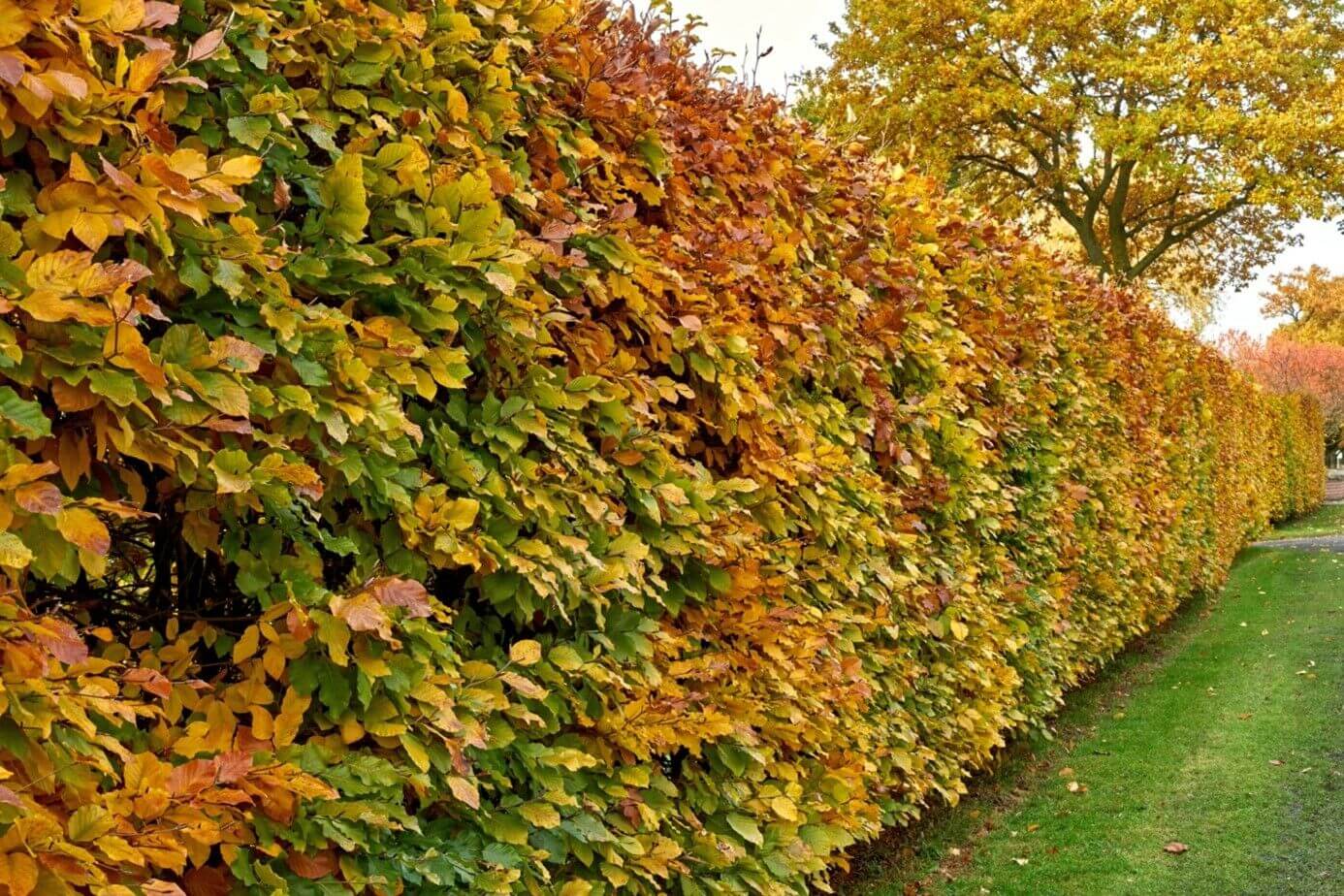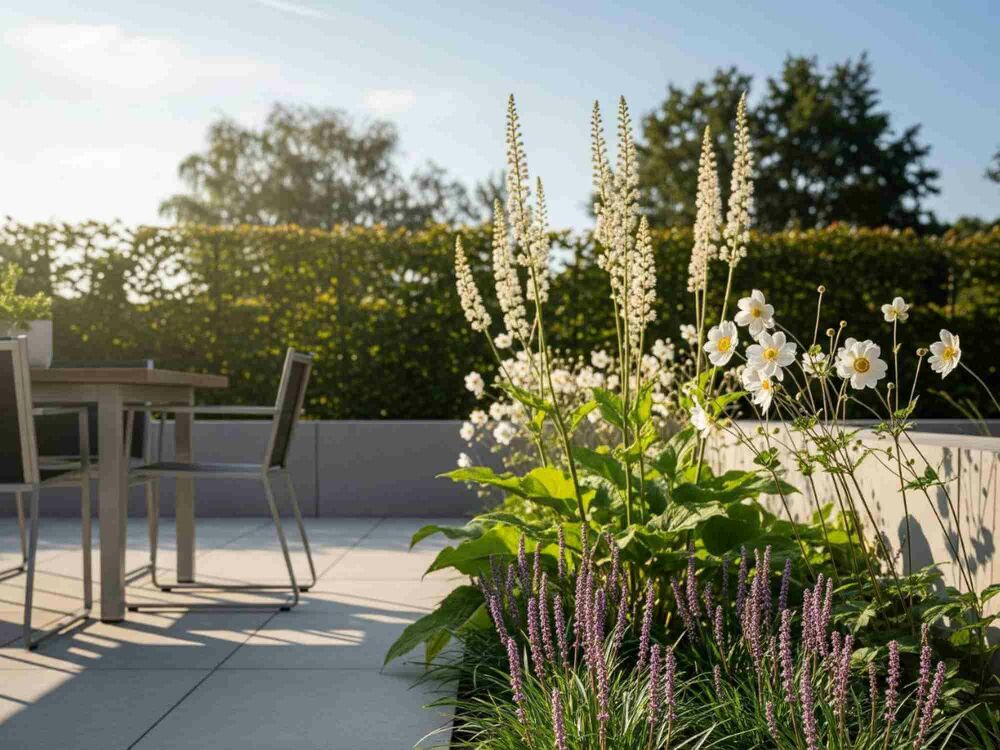Find the differences between the hornbeam and beech hedge
Hornbeam. Beech hedge. These terms are often used interchangeably. Not just sometimes, rather very often! As if it were one and the same plant. They do resemble each other, a lot. Which makes it a common mistake. But, the two are definitely not the same plant.
Nothing could be further from the truth. They look like each other, but they're not even family. The hornbeam, with the fantastic Latin name Carpinus Betulus, descends from the birch family. The Hornbeam (Fagus Sylvatica or Green Beech) descends from the beech family. We have to admit: the two denominations are similar: birch and beech, but let’s not forget, they are completely different families.
The first and foremost difference is the family from which the hedge plants originate: the beech hedge is also called the European beech.
In winter: evergreen gives more privacy, deciduous causes less privacy
In the winter, one plant is evergreen, the other is as uncultivated as it gets. This is the biggest difference between the two plants. The hornbeam loses its leaves in the autumn. The beech hedge simply retains its brown leaves, which is nice if you appreciate your privacy. An additional advantage of the beech hedge is the foliage of 365 days and the fact that the plants also stops a lot of wind. A hornbeam does not have the advantage of being evergreen all year round, but rather provides dense vegetation in spring. It grows leaves faster than the beech hedge.
The structure and color of the leaves differ
The hornbeam, the Carpinus Betulus, has rough leaves with deep veins. The leaves are also somewhat pointed, and have a beautiful green color. In autumn, these green leaves turn yellow and before you know, they are all on the ground. This happens during only one night frost, such a pity! However, in this case, a disadvantage in winter is an advantage in spring. Because then the hornbeam grows new, green leaves faster than the beech hedge (Fagus Sylvatica or Green Beech). Enjoyable when it’s outside season.
The leaves of the beech hedge are shiny and are smoother than the leaves of its companion, the hornbeam. Do you like red? Then you can also choose the red variant of the beech hedge. And how about a combination of red and green plants? A beautiful sight. The leaves of the beech hedge first turn yellow and red in autumn. The hedge plant keeps its leaves. That's why in spring, it takes a bit longer for the hedge to regain its green leaves, because the new leaves first have to push away the brown ones, so to speak. It's just what you prefer.
Planting the hornbeam and beech hedge comes close
The Carpinus Betulus, the hornbeam, if often seen in areas with wet soil, along a bank or in the coastal area. The beech hedge, Fagus Sylvatica or Green Beech, is popular throughout the country and can be seen in many gardens. When it comes to planting, there are some differences you have to take into account. Compared to the beech hedge, the hornbeam is less demanding to where it is planted. A moist spot is fine and even in clay soil it does well. You should not try the latter with a beech hedge. It prefers to grow on sandy soil that is not too wet. But beware: it doesn't like to be too dry either. It should be a bit in between. Not too wet, not too dry. You can make the beech hedge happy with some compost containing the fungus mycorrhiza. Just mix the compost through the garden soil. You'll see that your plants will do great in the short and long run.
Pruning both hedges
“Pruning can't be that difficult. Just prune once or twice a year. That's it… right?”
That’s an understatement. The two hedge plants are different. If you've planted a hornbeam, it's very important that you let the plant grow first. All the way until it reaches the height you have in mind. After that you can prune the hornbeam.
Pruning the beech hedge, on the other hand, is a different story. You have to prune it from the moment it is small. Regular topping is vital. So that the hedge is well branched at the bottom and will grow nicely dense. Something many people don't know: topping is great for other purposes as well: you have a much better chance to succeed if you regularly top the hedge.
Other peculiarity and difference
In the last weeks of spring, small catkins appear on the hornbeam, also called European Hornbeam, which later grow into small 'fruit' which birds love. So if you like some activity in your garden, a hornbeam is a good choice. Which by the way does not mean that you will never see birds in a beech hedge. On the contrary. Birds hide in it for up to 365 days per year. There are always leaves to hide behind. That's another big advantage of the Fagus Sylvatica, the beech hedge.



